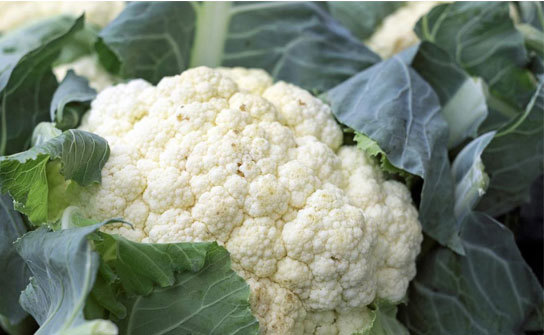 September-28-2023
September-28-2023
View: 1

Cauliflower seeds are usually sown indoors, but can also be sown outdoors from mid- to late spring.
Introduction
Cauliflower is a versatile and nutritious vegetable that can be a valuable addition to your farm's produce. With its crisp texture and mild, earthy flavor, cauliflower is a favorite in many culinary dishes. Growing cauliflower at your farm can be a rewarding experience, but it requires some careful planning and attention to detail. In this guide, we will take you through the steps to successfully plant and cultivate cauliflower on your farm.
Choosing the Right Time to Plant
Timing is crucial when it comes to planting cauliflower. It's a cool-weather crop and has specific temperature preferences. Here's a breakdown of when and how to plant cauliflower:
Starting Indoors: The primary sowing season for cauliflower is from March to May. However, for an early harvest, you can start sowing indoors as early as January or February. This gives your cauliflower a head start before transplanting them outdoors.
Direct Seeding: If you prefer direct seeding, aim for a July planting. Plant the seeds shallowly, about a quarter to half an inch deep, and space them 18 inches apart. Keep the soil consistently moist during seedling emergence.
Thinning: Once the seedlings emerge, thin them so that only one healthy seedling remains every 18 inches. This spacing allows enough room for the cauliflower heads to develop properly.
Avoid Extreme Temperatures: Cauliflower doesn't thrive in extreme heat or cold. Avoid planting during the heat of summer, as high temperatures can reduce yield and quality. Additionally, protect your plants from frost in late fall or early winter by covering them with row covers or cloths.
Preparing the Soil
Cauliflower plants have specific soil requirements for optimal growth:
Moisture: Ensure the soil is consistently moist, but not waterlogged. Dry soil can stunt growth, while waterlogged soil can lead to root rot.
Well-Drained: Cauliflower doesn't like to have soggy roots. Ensure your soil is well-drained to prevent waterlogged conditions.
Fertile Soil: Work organic matter, such as compost, into the soil to make it fertile. Cauliflower benefits from nutrient-rich soil for healthy development.
Planting Cauliflower
Once you've prepared your soil and determined the right timing, it's time to plant cauliflower:
Seed Depth: Plant the seeds a quarter to half an inch deep in the soil. This shallow planting depth allows for proper germination.
Spacing: Space the cauliflower seedlings 12-18 inches apart in rows that are 2-3 feet apart. Adequate spacing is essential for each plant to have enough room to grow and form a solid head.
Transplanting: If you started your cauliflower indoors, transplant them carefully into the prepared garden beds once they have reached a suitable size and the risk of frost has passed.
Caring for Your Cauliflower Plants
Cauliflower, like its relatives in the Brassica family, requires attentive care throughout its growth cycle:
Watering: Practice deep and infrequent irrigation. Water your cauliflower plants thoroughly, but avoid overwatering. Aim to keep the soil consistently moist, not soggy.
Weeding: Regularly remove weeds around your cauliflower plants to reduce competition for nutrients and water.
Fertilizing: Apply a balanced fertilizer when your plants are about 3-4 weeks old to support their growth. Follow the recommended dosage on the fertilizer packaging.
Pest and Disease Management: Keep an eye out for common pests such as aphids and cabbage worms. Implement organic pest control methods to protect your cauliflower plants. Also, be vigilant for signs of diseases like clubroot and downy mildew.
Harvesting Cauliflower
Knowing when to harvest cauliflower is crucial to ensure the best quality:
Tight Heads: Harvest your cauliflower before the flower head starts to open or break apart. Tight heads indicate maturity.
Size: A mature cauliflower head should be compact and about 6-8 inches in diameter.
Timing: Depending on the variety and growing conditions, cauliflower typically matures in 55 to 100 days from planting.
Conclusion
Growing cauliflower on your farm can be a satisfying endeavor when you follow these guidelines for planting and caring for your crops. By paying attention to timing, soil preparation, and the needs of your cauliflower plants, you can look forward to a bountiful harvest of this nutritious and delicious vegetable. Remember to protect your cauliflower from extreme temperatures, pests, and diseases, and you'll be on your way to enjoying homegrown cauliflower at its finest. Happy farming!